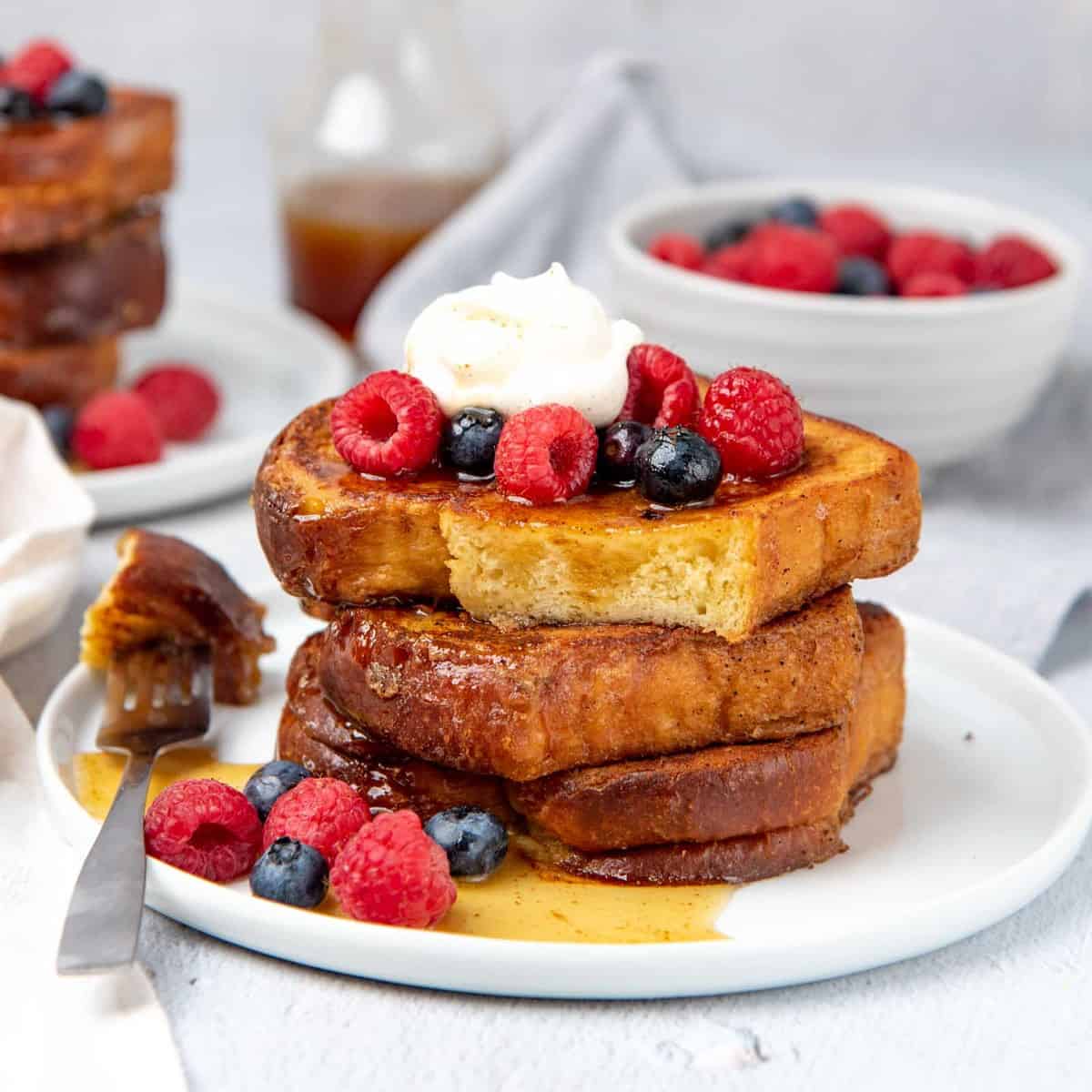Perfect French Toast: A Breakfast Classic Done Right
French toast, also known as "eggy bread," is a beloved breakfast classic that brings comfort and warmth to the table. When made to perfection, this simple yet delightful dish becomes a heavenly treat that delights both young and old alike. In this article, we'll uncover the secrets to making the Perfect French Toast – crispy on the outside, fluffy on the inside, and bursting with flavor.
Table of Contents
- What is Perfect French Toast?
- The Key to the Best French Toast: The Bread
- How to Make Perfect French Toast: A Step-by-Step Guide
- 4.1. Gather the Ingredients
- 4.2. Preparing the Custard Mixture
- 4.3. Soaking the Bread Slices
- 4.4. Cooking the French Toast
- Tips for the Perfect French Toast
- 5.1. Choosing the Right Bread
- 5.2. Adding Flavor to the Custard
- 5.3. Using the Correct Pan and Temperature
- 5.4. Serving Suggestions
- 5.5. Freezing and Reheating French Toast
- The Versatility of Perfect French Toast
- Frequently Asked Questions (FAQs)
- 7.1. Can I use stale bread for French toast?
- 7.2. Can I make French toast without milk?
- 7.3. What toppings go well with French toast?
- 7.4. Can I use whole wheat bread for French toast?
- 7.5. How do I prevent the French toast from becoming soggy?
- Conclusion
2. What is Perfect French Toast?
Perfect French Toast is the ultimate breakfast indulgence that strikes the ideal balance between sweetness and a hint of savory. It features slices of bread soaked in a custard-like mixture of eggs, milk, and flavorings, then cooked to golden perfection. The result is a heavenly combination of soft, eggy bread with a slightly crispy exterior that is nothing short of irresistible.
3. The Key to the Best French Toast: The Bread
The bread you choose plays a crucial role in achieving the Perfect French Toast. Opt for thick-cut slices of bread, preferably a day-old brioche, challah, or Texas toast. Sturdy bread with a slightly dry texture absorbs the custard mixture better, resulting in a creamy center and a golden crust when cooked.
4. How to Make Perfect French Toast: A Step-by-Step Guide
Crafting the Perfect French Toast is a simple and rewarding process. Let's walk through the steps to create this delightful breakfast dish.
4.1. Gather the Ingredients
For this recipe, you will need eggs, milk, vanilla extract, ground cinnamon, salt, sugar, and thick slices of bread.
4.2. Preparing the Custard Mixture
In a shallow bowl, whisk together eggs, milk, vanilla extract, ground cinnamon, a pinch of salt, and a touch of sugar. The cinnamon and vanilla add a warm, aromatic flavor to the French toast.
4.3. Soaking the Bread Slices
Dip each slice of bread into the custard mixture, making sure both sides are thoroughly coated. Allow the bread to soak for about 20-30 seconds per side.
4.4. Cooking the French Toast
Heat a non-stick skillet or griddle over medium heat and add a pat of butter or a drizzle of vegetable oil. Once the butter melts and the pan is hot, place the soaked bread slices in the skillet. Cook until each side turns golden brown and crispy, approximately 2-3 minutes per side.
5. Tips for the Perfect French Toast
Elevate your French toast game with these helpful tips:
5.1. Choosing the Right Bread
Select sturdy, thick-cut bread with a slightly dry texture, as it will hold up better during soaking and cooking.
5.2. Adding Flavor to the Custard
Experiment with different flavors by adding nutmeg, cardamom, or a splash of almond extract to the custard mixture.
5.3. Using the Correct Pan and Temperature
Use a non-stick skillet or griddle to ensure the French toast cooks evenly without sticking. Adjust the heat to medium to prevent burning or undercooking.
5.4. Serving Suggestions
Top your Perfect French Toast with maple syrup, powdered sugar, fresh berries, sliced bananas, or a dollop of whipped cream for a delightful finishing touch.
5.5. Freezing and Reheating French Toast
If you have leftovers, let the French toast cool completely, then freeze them in a single layer on a baking sheet. Once frozen, transfer them to a resealable bag. Reheat the frozen slices in a toaster or oven for a quick and convenient breakfast.
6. The Versatility of Perfect French Toast
While Perfect French Toast is delightful on its own, it's also a blank canvas for creativity. Feel free to experiment with various toppings, spreads, and fillings to create your personalized French toast masterpiece.
7. Frequently Asked Questions (FAQs)
Let's address some common questions about Perfect French Toast:
7.1. Can I use stale bread for French toast?
Yes! In fact, using slightly stale bread can yield even better results as it absorbs the custard mixture more effectively.
7.2. Can I make French toast without milk?
Certainly! You can use alternative milk options like almond milk, soy milk, or oat milk to make dairy-free French toast.
7.3. What toppings go well with French toast?
The possibilities are endless! Some popular toppings include fresh fruits, whipped cream, chocolate chips, caramel sauce, or even a drizzle of honey.
7.4. Can I use whole wheat bread for French toast?
Absolutely! Whole wheat bread adds a wholesome touch to French toast while still offering a delicious result.
7.5. How do I prevent the French toast from becoming soggy?
To avoid soggy French toast, make sure not to soak the bread slices for too long in the custard mixture. A quick dip is sufficient for ideal results.
8. Conclusion
With its delightful combination of fluffy interior and crispy exterior, Perfect French Toast is a breakfast dream come true. By selecting the right bread and mastering the custard mixture, you'll be well on your way to creating a breakfast dish that will be cherished by all. So, whisk up the custard, grab a stack of bread slices, and indulge in the simple pleasure of Perfect French Toast.





Post a Comment